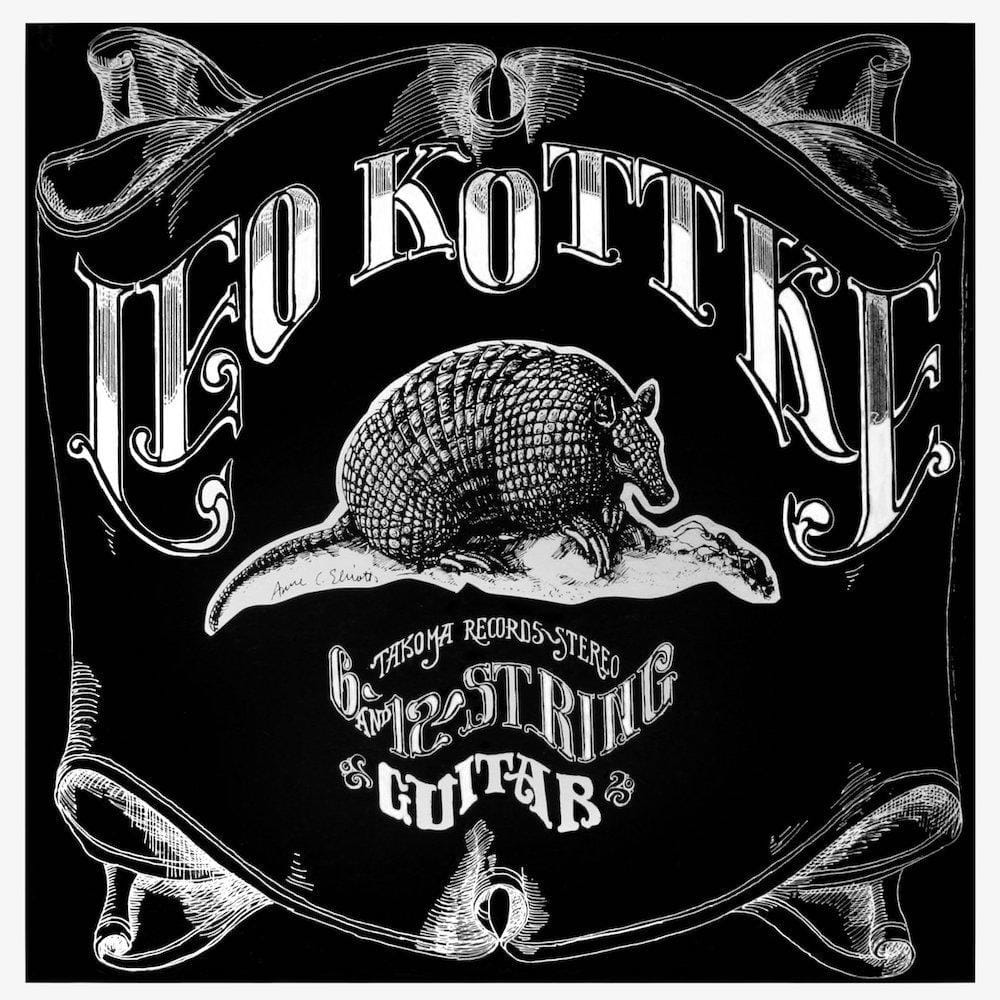Flashback Album Review: Leo Kottke's "6- and 12- String Guitar"
Leo Kottke's "6- and 12-String Guitar", was released in 1969. The album is a landmark in acoustic fingerstyle guitar, despite being a little...odd.
Leo Kottke's album, "6- and 12-String Guitar", was released in 1969, clocking in at a crisp 36 minutes long. While this album was well-received in it's own time, it has grown even more loved with time. It is seen as a landmark in acoustic fingerstyle guitar, and has in inspired a generation of players, including the likes of Michael Hedges. Admittedly, the tuning is a little janky, and the track descriptions are bizarre, but this album is worth going back for listen. So here we go for a "flashback" album review...

Part of what made the album so unique was that not many people were doing this. Sure, fingerstyle acoustic playing was prevalent in the incredibly popular folk music of the era. But solo arrangements? At fast tempos? With slide guitar? Not so much. This was some unique guitar playing that took some serious chops. This was simply interesting music.
Another part of what makes this album so unique is the liner notes (seriously). Kottke penned the notes himself, and it appears he took inspiration from "Hitchhiker's Guide to the Universe" or something, because they are downright goofy. For a little fun, see the photo of the liner notes at the bottom of this article and click on them to expand them in your browser. Acid, mushrooms, anyone...?

We'll conduct our "Flashback Album Reivew" in the spirit of Kottke's liner notes. We'll post the song titles, along with Kottke's quirky sub-titles, and then we will provide some off-the-cuff evaluations of the tunes.
And if you'd rather listen to it then read about, by all means, click through to listen!
Track-By-Track Review of "6- and 12-String Guitar" by Leo Kottke:
Note: The italicized descriptions are from the original album. Kottke wrote these himself and, yes, they're just plain weird. The bullet points are my own comments on the tracks.
1. The Driving of the Year Nail (1:54)
From an old Etruscan drawing of a sperm cell.
- This track reminds me of Doc Watson;
- A bluegrassy, down home vibe;
- Nice harmonics riffs built into the refrain.
2. The Last of the Arkansas Greyhounds (3:18)
A terror-filled escape on a bus from a man fired from Beaumont ranch.
- Feels like a contemporary take on more traditional classical Spanish compositions, tinged with a bit of folk-bluegrass stylings.
3. Ojo (2:14)
Ojo Caliente where the Zuni hid from Estaban, the Moor, and the Spaniards.
- Just a nice tune.
4. Crow River Waltz (3:20)
A prayer for the demise of the canoe and the radar trap without which Federal prisons will have to be rebuilt to accommodate prepubescence.
- 3/4 country waltz (as the title says);
- The simple descending chord structure and on-the-beat melody feels like a slow, countrified Elvis tune.
5. The Sailor's Grave On The Prairie (2:34)
Originally written to commemorate Nedicks and a Minneapolis musician's contempt for the three A.M. cheeseburger with a nickel slice of raw.
- Slide guitar and fingerstyle 12-string? Yes. Kottke makes it work.
6. Vaseline Machine Gun (3:11)
1) for waking up nude in a sleeping bag on the shore of the Atlantic surrounded by a volleyball game at high noon, and 2) for the end of the volleyball game.
- Sounds like a dobro tune at first;
- One of the most "modern" sounding of the album;
- Some great slide melody on the chorus;
- Often referenced as a groundbreaking song when it was released.
7. Jack Fig (2:14)
A reluctant lament.
- Fun, fast song;
- Feels like something Bela Fleck might cover, with it's nice verse melody and rhythmic chorus.
8. Watermelon (3:12)
While at Watermelon Park Music Festival I had the opportunity to play a banjo in the middle of the night for a wandering drunk. When I finished he vomited—an astute comment on my playing. Made me feel very distinguished.
- Leaves bluegrass behind and is more in folk-country territory with a slightly melancholic overtone. Sounds like it came out in the 90's.
- This is the song I'd be most likely to learn from the album.
9. Jesu, Joy of Man's Desiring (2:24)
The engineer called this the ancient joy of man's desire. (Bach had twenty children because his organ didn't have any stops)
- Yup, that one. The classic piece, but performed beautifully by a young, hippied-out and tripping out (I mean, I'm just judging by the liner notes here...) acoustic guitar player.
10. The Fisherman (2:32)
This is about the mad fishermen of the North whose ice fishing spots resemble national shrines.
- If you ever dreamed about Tommy Emmanuel doing a knock-off piece based on Paul Simon's "The Boxer"...then you'll love this.
11. The Tenessee Toad (2:40)
Who made an epic journey from Ohio to Tennessee.
- So. Much. Chorus.
- Not my favorite. But if you were stoned and tripping, this song would probably be amazing.
- Sounds like Roger Waters (Pink Floyd) took three tabs of acid and got lost in the woods with an acoustic guitar and a slide.
12. Busted Bicycle (2:48)
Reluctance
- This one wins the award for best matching title.
13. The Brain of the Purple Mountain (2:11)
From A. L. Tennyson.
- It gets a little lost harmonically. Like, literally, Kottke walks through a string of non-harmonic chords and then peters out playing a random chord, and then another random chord...and then starts back in on a new melodic section of the song. It's almost like you can hear Kottke writing the song and saying, "Uhhh... well what do I do now? Ummmm.... I guess I'll...start a new section?"
14. Coolidge Rising (2:50)
While rising from the sink, cupboard doors opened and engulfed his head; while turning to the right to avoid the whole incident he walked into a refrigerator—which afforded a good chin rest for staring at some bananas in a basket.
- A great driving bluegrass tune. If Jerry Douglas doesn't have this in his repertoire, he should.
And here's those liner notes from the original album:


